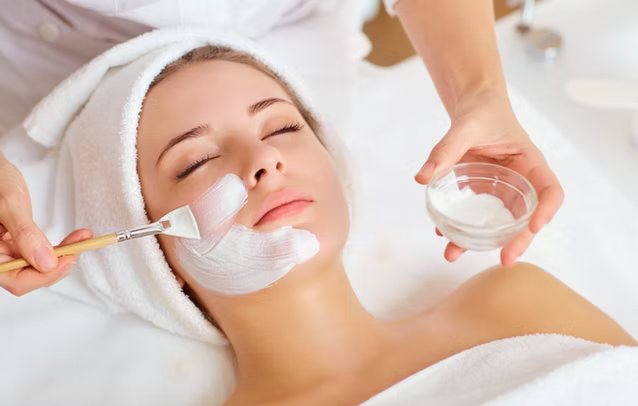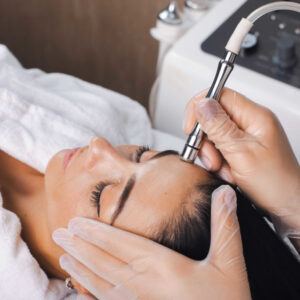Description


A basic facial typically involves a series of steps designed to cleanse, exfoliate, and hydrate the skin. The process usually includes:
1. *Cleansing*: Removing makeup and impurities from the skin.
2. *Exfoliation*: Sloughing off dead skin cells to promote cell turnover.
3. *Steam*: Opening up pores to facilitate deeper cleansing.
4. *Extraction*: Removing blackheads or clogged pores (if necessary).
5. *Mask*: Applying a mask tailored to the skin type to address specific concerns.
6. *Moisturizing*: Hydrating the skin to maintain its barrier and prevent dryness.
7. *Massage*: Often included to promote relaxation and improve circulation.
Benefits
The benefits of a basic facial include:
– *Deep Cleansing*: Removes dirt, oil, and impurities from the skin.
– *Improved Skin Texture*: Exfoliation helps to smooth the skin’s surface.
– *Hydration*: Moisturizers and masks help to keep the skin hydrated.
– *Relaxation*: The facial massage can reduce stress and promote relaxation.
– *Customized Treatment*: Facials can be tailored to address specific skin concerns (e.g., acne, dryness, aging).
After Care
Post-facial care is essential to maintain the benefits of the treatment. Recommendations may include:
– *Avoiding Makeup*: Refrain from applying makeup for at least 24 hours to allow the skin to breathe.
– *Sun Protection*: Use sunscreen to protect the skin from UV damage, especially if exfoliation was performed.
– *Hydration*: Drink plenty of water and use a gentle moisturizer to keep the skin hydrated.
– *Avoiding Harsh Products*: Steer clear of strong exfoliants or active ingredients for a few days post-treatment.
– *Follow-Up Treatments*: Schedule regular facials for ongoing skin health.
Health and Safety
Health and safety considerations in facial treatments include:
– *Sanitation*: Ensuring all tools and equipment are properly sanitized to prevent infections.
– *Skin Assessment*: Conducting a thorough skin analysis to identify any contraindications (e.g., allergies, skin conditions).
– *Client Consultation*: Discussing the client’s medical history and skin concerns before treatment.
– *Hygiene Practices*: Practicing good hygiene, such as handwashing and using gloves when necessary.
Professional Standards
Maintaining professional standards in facial treatments involves:
– *Certification and Training*: Practitioners should be properly trained and certified in esthetics and skin care.
– *Ethical Practices*: Adhering to ethical guidelines, including informed consent and respecting client confidentiality.
– *Continuous Education*: Staying updated on the latest techniques, products, and safety protocols in the industry.
Client Communication**: Providing clear information about the treatment process, expected results, and aftercare.
By adhering to these principles, practitioners can ensure a safe, effective, and enjoyable experience for their clients.






Reviews
There are no reviews yet.